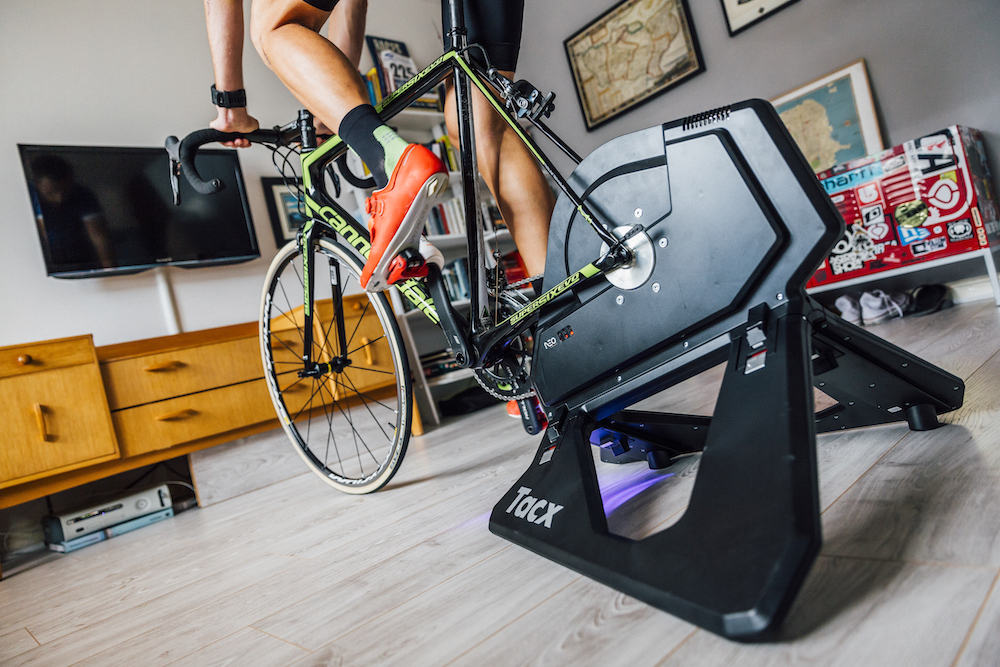Strava's Year in Sport shows increase in virtual rides whilst gender divide remains on the road
Indoor miles are on the up worldwide but the UK has the worst gender divide in Europe when it comes to commuting by bike


If it feels like more of your peers are getting the miles in indoors than ever before, it's probably because they are. Or at least, they're more likely to let you see the breakdown of their at-home workout.
Strava's annual 'Year in Sport' review shows that virtual rides have been up all year - with a 5% increase in June this year vs 2015 and 10% increase in January 2019 vs 2015.
The data comes from looking at the activity trends of 48 million people, across 195 countries where Strava is in use.
Analysts from Strava commented: "Data from the Year in Sport report demonstrates how adverse weather conditions impact athlete activity. As the world sees more frequent extreme weather events, technology is helping athletes to train in whatever the season or weather."
With apps such as Zwift, TrainerRoad and The Sufferfest offering better integration to Strava - particularly Zwift which provides a map - it's also possible that some of the percentage increase comes from a higher number of uploads as opposed to more indoor trainer rides.
However, Sport England’s Active Lives survey released earlier this year showed a similar increase in indoor miles, alongside a decrease in outdoor riding - a trend British Cycling's Policy Manager Nick Chamberlin said made for 'uneasy reading'.
The data also showed that on the road, Britain lags behind the rest of Europe in gender equality when it comes to commutes.
The latest race content, interviews, features, reviews and expert buying guides, direct to your inbox!
UK women are 12% less likely to use the bike to commute, compared to the global average of 6.7%, with France, Germany and Spain all much closer to equality.
On the plus side, in London women were only 2.7% less like than men to commute by bike, suggesting progress in the capital city.
"It is disappointing to see that British women are much less likely to commute by bike than men compared to the global average, and we should refocus on the root causes," said Gareth Mills, UK Country Manager of Strava.
"Organisations around the world, including TfL, are working with Strava Metro to find insights in our data which can support better infrastructure planning - and it’s great to see that London performs far better than the UK average in this area.”
Strava's members offset a whopping 28,270 metric tons of CO2 by commuting over 112.6 million kilometres in the UK last year over 2019 - with the average commute being around 8.3km in length - greater gender equality could increase that saving still further.
As well as being less likely to commute by bike, women were also less likely to be active alone - with Strava putting some of this down to fears over safety.
On the bike, 37% of women's rides happened in groups, compared to 27% of men's.
A study by England Athletics in 2017 showed that almost half of female athletes said they felt unsafe when out alone. In runners, the split was 22% vs 32% - and this increased at night time, with half of all runs recorded by women happening with someone else.
Michelle Arthurs-Brennan the Editor of Cycling Weekly website. An NCTJ qualified traditional journalist by trade, Michelle began her career working for local newspapers. She's worked within the cycling industry since 2012, and joined the Cycling Weekly team in 2017, having previously been Editor at Total Women's Cycling. Prior to welcoming her first daughter in 2022, Michelle raced on the road, track, and in time trials, and still rides as much as she can - albeit a fair proportion indoors, for now.
Michelle is on maternity leave from April 2025 until spring 2026.
